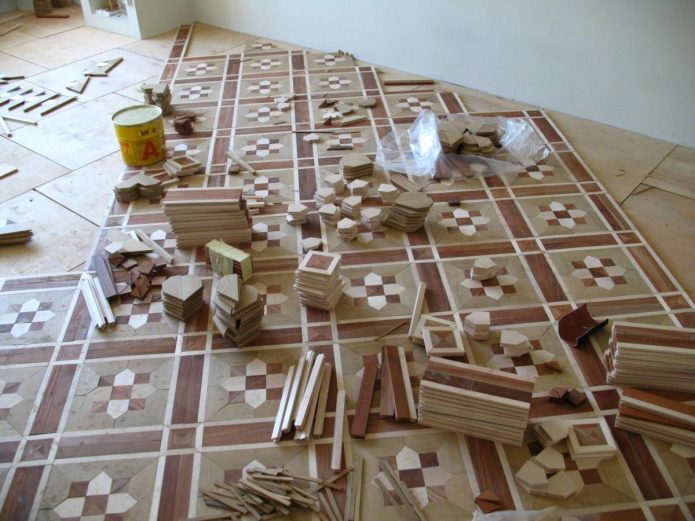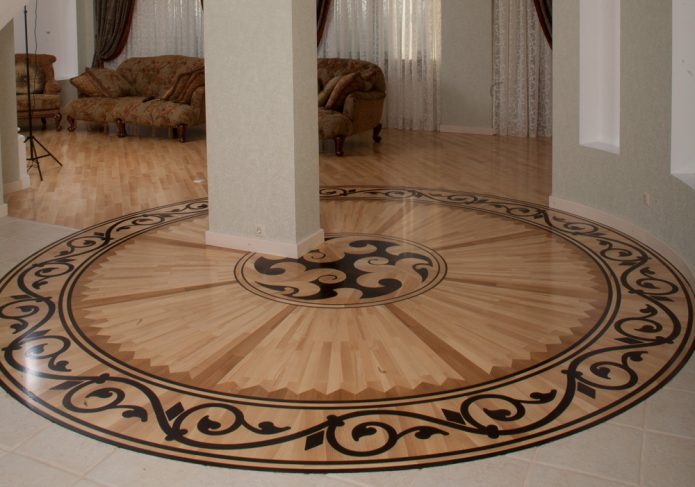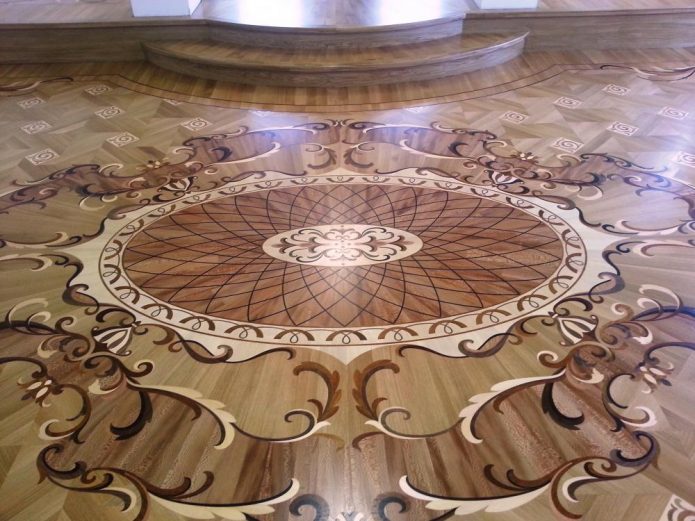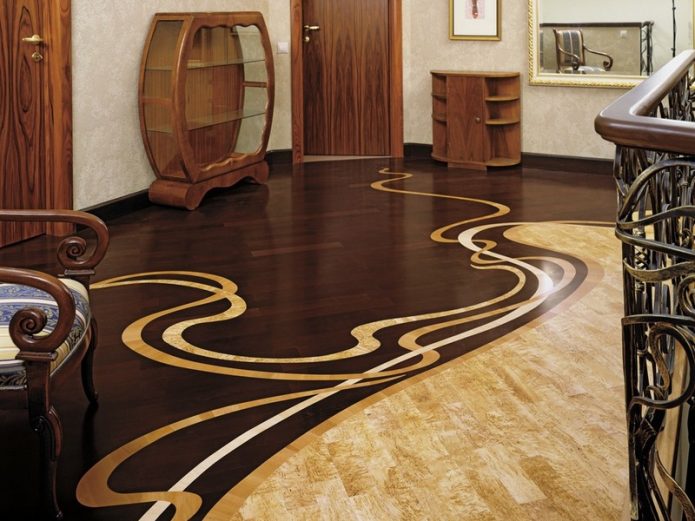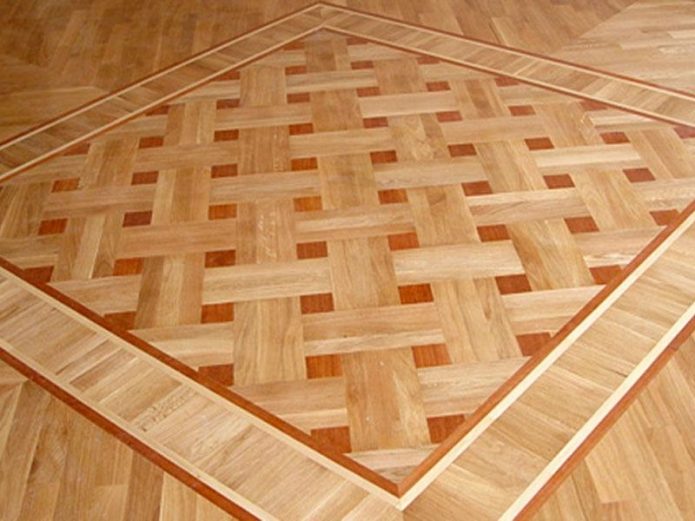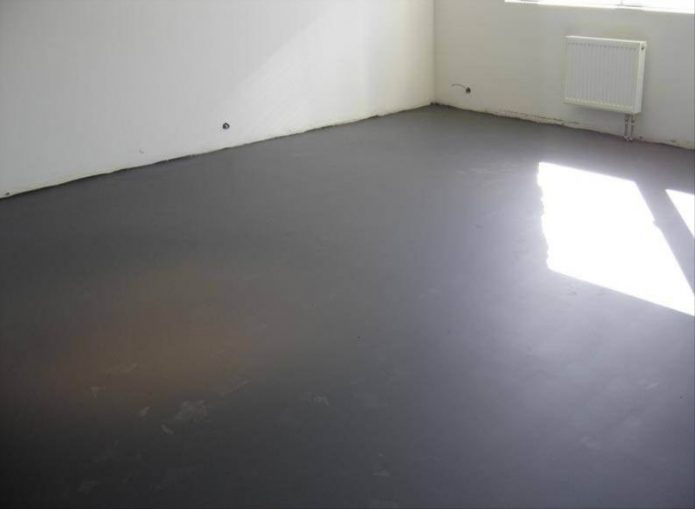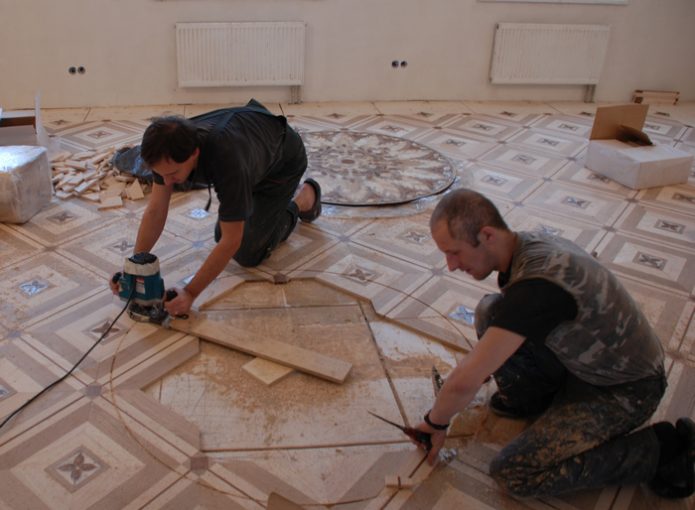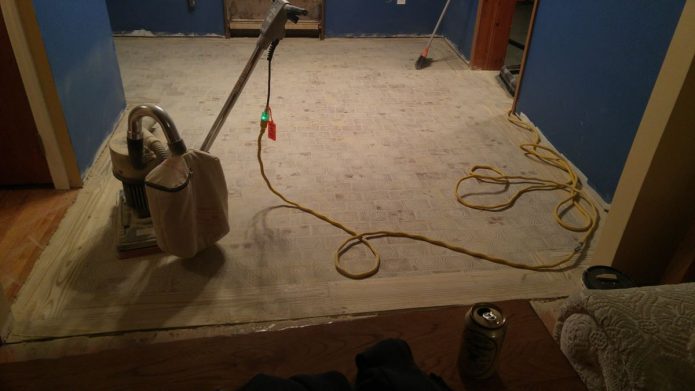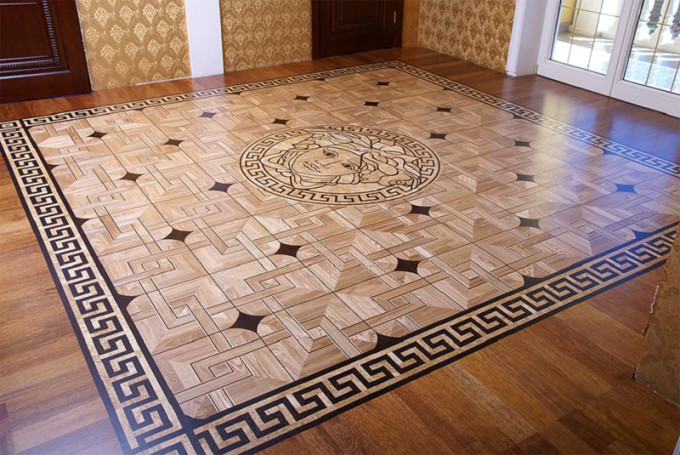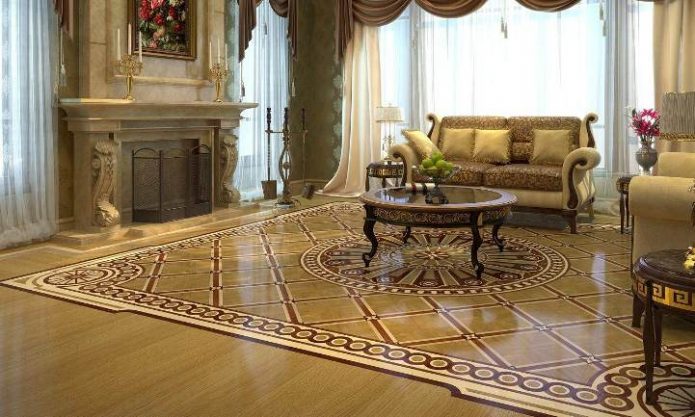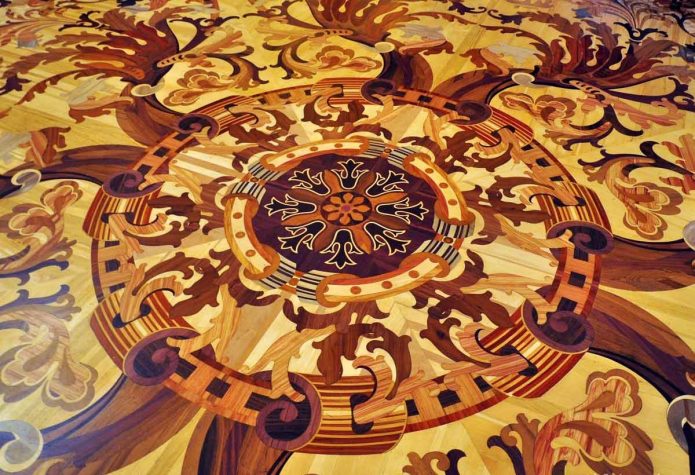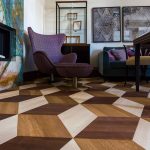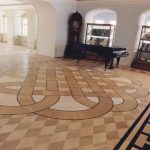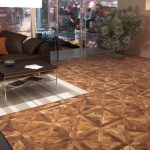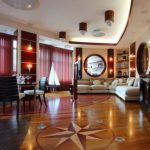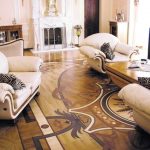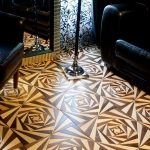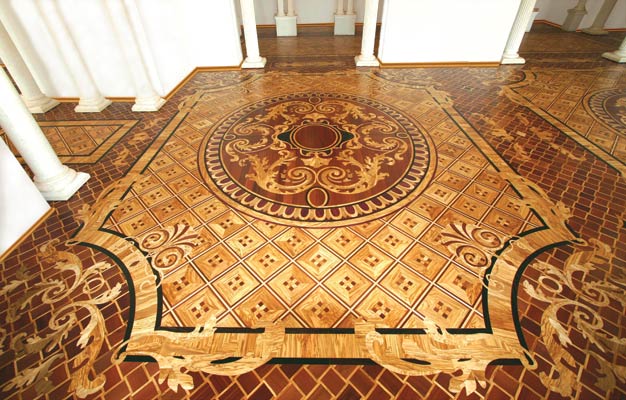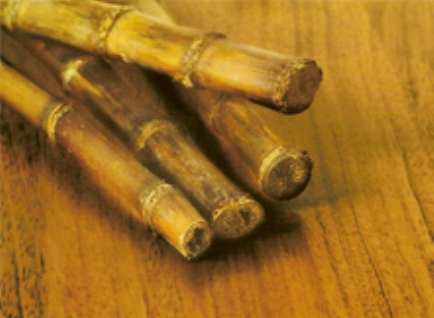What is art parquet, its varieties and laying rules
The most impressive and expensive of decorative finishing materials for the floor is parquet. It is a symbol of luxury and prosperity, impeccable taste. The finest patterns of precious wood are added to the original carpet. Many buyers walk past the parquet in a hardware store, considering it an inaccessible pleasure. But having the skills to work with wood and strictly observing the installation technology, you can assemble natural art parquet with your own hands.
Content
What is art parquet?
Parquet consists of several species of wood in various shades. With the help of pieces and elements of contrasting colors and wood drawings, ornaments and whole paintings are laid out, forming on the floor a solid canvas with an image. For this elite coating use maple, pear, aspen, cedar, birch, as well as rare and exotic woods. Laser technology allows you to accurately cut out all parts of the picture that are ideally suited to each other.
Parquet is popular due to the following advantages:
- naturalness of the material: in addition to wood, inlays from metals, semiprecious stones and other natural materials are included in the parquet;
- environmental safety - the parquet floor does not cause allergies, does not emit toxic substances;
- manufacturing technology opens up great opportunities for designers, allowing you to create unique complex images;
- the parquet perfectly retains heat and muffles sounds, has antistatic properties, does not attract dust particles;
- the service life of high-quality parquet may exceed 100 years.
There are also disadvantages:
- rare and noble materials, the complexity of manufacture and installation, exclusivity make this coating very expensive;
- requires special care and protection;
- afraid of water and dryness, subject to mechanical damage.
Manufacturing methods
There are several techniques for assembling drawings from wooden elements. The main ones are two of them: intarsia and marquetry. These techniques have differences in the complexity of the calculation and in wear resistance, and therefore in terms of life.
Intarsia
Inlaying the wooden parts of the picture into the base of another wood species is called intarsia. To create an image, a base is prepared from an array of a certain kind of tree, grooves for inlaying are cut out in it. The constituent elements of the picture are machined separately on the basis of a sketch from other wood species. After the preparatory stage, the assembly of the painting begins: each piece is pasted into its corresponding hole.

This is painstaking manual work, complex versions of which require experience and skills.For beginners, the assembly of friezes and modules with ready-made ornaments that are built into the canvas is suitable.
The main advantage of parquet made in this way is high wear resistance and the possibility of grinding, which increases the service life of the floor.
Marquetry
The marquetry technique appeared later; it is somewhat simpler to execute than intarsia. If in intarsia all parts of the image are cut into the base, then in the marquetry method thin pieces of veneer are assembled into a pattern and glued together on the surface of the main canvas according to the scheme. The ornament is obtained only from above.
Such a decorative coating can be mounted with your own hands, having bought modules for assembly and ready-made friezes. For this technique, various varieties of wood are used and inlaid pieces from other natural materials. Amber, gold plates, mother of pearl, semiprecious stones, leather and ivory are used to decorate flooring and furniture.
Other
The ancient countess technique, which can be seen in palaces and historical buildings, for example, in the Hermitage. Gutters are cut down in the massif of the tree, which are then filled with wood dust, molten metal, mother of pearl, amber, and other materials.
Laying of image elements in the inlay technique occurs at a certain depth of the main canvas. Such a floor is less wear-resistant and costs more than those made in other techniques. Inlaid not only wood, but also precious and semiprecious minerals, gold and silver plates, leather.
Varieties
The images on the floor include various ornaments and individual elements. For their correct selection and location on the canvas, the following criteria must be taken into account:
- purpose of the room;
- the size of the room, its lighting;
- the presence of several zones;
- quantity and placement of furniture;
- general style of the room.
Ornaments are divided into several main groups and can be combined with each other to create complex drawings.
Modular
Composite parquet from the same panels, which can also be composite and inlaid. Shields of square or rectangular shape are connected by a spike-groove system into a single canvas with a repeating pattern. Modules can be inserted into ordinary parquet, creating decorative islands in any order or highlighting certain sections of the floor with them. Such parquet is appropriate in small rooms and elongated rooms with lots of furniture and decorative elements.
Socket
This ornament is considered the most difficult to perform, traditionally it is used in the center of the room or denotes the core of a separate zone. Lines and patterns diverge from the center of the outlet to its edges. The ornament made of valuable materials contains floral and floral motifs, geometric shapes, animals and heraldry. The decorative effect is achieved in different shades and directions of wood fibers.
Outlets harmoniously solo in spacious, well-lit interiors, where they are clearly visible and have an elegant and solemn appearance. In small and darkened rooms, sockets are undesirable, large and contrasting patterns visually reduce space.
Border
This type of ornament represents elongated and interwoven lines of arbitrary shape. Floral or abstract patterns, strict geometric stripes bordering outlets or modules divide the space of the room into zones. The border acts as the main pattern or additional element. It looks good at the junction of various zones or as a border of a complex image of an arbitrary shape. The apartment is recommended to use light medium-sized elements of parquet.
other methods
You can lay out art flooring in other ways that are simpler to execute.
- French Christmas tree - oblong planks are laid out perpendicular to each other in the form of a Christmas tree. In this case, the different direction of the fibers and dies from different varieties of trees create a pattern on the floor.
- Checkers - laying out with squares with alternating contrasting shades in the form of a chessboard.
- Basket or weaving - the plates are laid out according to a certain pattern, the ornament resembles interlaced stripes or a basket.
- Rhombuses - elements are joined at an angle of 45º and repetitive modules are obtained in the form of geometric shapes.
What else to look for when choosing
In addition to choosing a drawing and a way of laying out, when choosing a decorative floor covering, it is necessary to pay attention to some technical parameters of the material:
- texture and compatibility of materials. Too much contrast and colorful combinations are undesirable. Subtle transitions and harmonious combinations form unique and integral paintings that perfectly fit into the interior of any style direction;
- the dimensions of the decorative elements also affect the overall appearance of the room after repair. Large and bright images will decorate bright rooms with a minimal amount of furniture;
- additional elements and accessories: substrates, friezes, inserts, glue, protective coatings, baseboards, corners, sills;
- quality indicators. The integrity of the modules and the availability of accompanying documents, warranty card and instructions with the layout scheme.
Overview of the best manufacturers of art flooring
Over the several centuries of the existence of such parquet, its manufacturing technology has been brought to perfection. Today, elements of the ornament are cut on CNC laser machines, manufacturers invent the latest protective coatings and combinations of precious woods. World-class leaders are worthy of competition for domestic companies.
A joint venture between Sweden, Russia and Serbia, Tarkett produces a wide range of parquet coatings. This is an elite class product. Perfect grinding and precise fit of parts - this quality allows the manufacturer to set high prices on their products. In Russia, this company is also represented by the Synteros brand, which, in addition to excellent quality, is famous for the more affordable price of products.
Another Swedish manufacturing company, Kahrs, has been operating on the market for over 150 years and has reached the highest level of parquet quality. A huge selection of shades and textures determines the demand for the flooring of this company.
The German manufacturer Haro is proud of its complete production cycle, from its own forestry to the delivery of finished products to customers. Together with the board, skirting boards, sills and other additional products for laying parquet and caring for it are sold.
Russia's natural forest resources enable domestic companies to use many types of wood in their production. From oak, beech, ash, aspen and birch, collections of parquet from the Moscow factory "ASV Parket" are created. Ready-made modules, executed in different colors, exclusive solutions and the latest laser equipment, as well as many years of experience in manual assembly of drawings make the products of the Moscow parquet factory in demand and popularity.
The company LesExport has a wide distribution network and makes premium products available to ordinary customers. The AmberWood brand of this manufacturer is characterized by a perfect fit and geometry of the elements and a long service life.
What is the value of
Piece natural parquet with inlays or marquetry is undoubtedly an elite product. It is made of exotic and valuable species of wood, so its high cost is justified. In addition to purchasing material, other expenses must be included in the estimate:
- the cost of preparatory work and materials for them. Repair or dismantle of the old base, pouring a new screed and leveling mixture, strengthening the wooden floor and the flooring of the plywood substrate;
- the price of components and additional goods, for example, protective waxes, varnish, baseboards and sills;
- if the image is exclusive and custom-made, then the price of a unique parquet increases significantly;
- the cost of grinding and finishing with varnish or other protective composition.
The cost of material and laying of art flooring in the lower price category for a room of 12 m² will be 101,320 rubles.
Work rates and calculation of consumption and cost of materials:
- in one package of modular parquet 2 m² and it costs 11,800 rubles. When purchasing material, it is necessary to add 10-15% to the floor area for the trimmings and the price of fasteners, substrates, skirting boards and chemicals. For a 3x4 m room, 7 packs of parquet and related materials will be required in the amount of 82,600 rubles .;
- the purchase of materials for plywood foundations will cost 7 thousand rubles, the work of the master will cost from 40 to 60 rubles per m²;
- the average price of laying simple drawings starts at 300 rubles. per m² and comes to 1 thousand rubles .;
- grinding costs 200 rubles. per m², varnishing 100 rub., installation of a plinth 100 rub. per linear meter.
For complex premium-class drawings, the prices are much higher, the cost for the same room will be 250 thousand rubles, example of calculation:
- preparation of the foundation has the same cost as in the first calculation and is equal to 7 thousand rubles for materials and 60 rubles. per m² of the master’s work;
- the cost of individual paintings and patterns starts from 5 thousand rubles. for 1 module and above. For an area of 12 m², at least 200,000 rubles will have to be spent on material;
- the cost of laying with polishing and varnishing is 2,500 rubles. per m² and higher.
Styling technology
For lean owners who have a knack and experience working with wood, it is possible to significantly reduce the estimated cost of flooring by laying and assembling a drawing with your own hands. To complete all stages of work without errors and get a beautiful floor, you need to carefully study the step-by-step instructions and strictly follow the technology.
- Preparation and inspection of the base. The surface of the rough screed should be as flat and clean as possible. Small differences in height and bumps must be removed by pouring a small layer of leveling mixture. Wooden floors should be strengthened with nails. If the screed is in poor condition, it should be removed and a new one filled. Dismantle the dilapidated wooden floor to the log and fill in new boards, and lay the plywood substrate on top, securing it with self-tapping screws.
- It is recommended to do preliminary marking and layout of elements on the floor. You need to work at a temperature of +18 ºC, at a humidity of 40-60%. Modules can be connected in a glueless way using locks, but glueing is considered more reliable. Plywood should be primed for better grip.
- The glue is applied with a notched trowel to the plywood base and to the ends of the dies. Then the board is pressed, fixed on the base, and excess glue is wiped off. Assembly begins according to the attached diagram from the center of the room or from the wall. For a snug fit, they are knocked out with a rubber mallet. Between the wall and the floor, you need to leave a temperature seam of 1 cm, then the skirting and thresholds will close the slots. The glue dries in a week.
- The final stage of work is grinding and varnishing.Parquet is ground first with a coarser nozzle and then with a finer one to give the floor perfect evenness and smoothness. Clean from dust with a vacuum cleaner. At this stage, you can independently tint the parquet or its individual elements with special tinting compounds. Varnishing protects the parquet from moisture and mechanical damage. It is applied in 3–9 layers, each layer dries for about a day. A full set of durability of a varnish makes 1-2 months. After that, you can arrange furniture in the room.
Options for modern parquet design
Sawing at different angles and laying out fibers in different directions, selecting halftones, incorporating glass and leather elements, tinting and aging wood allow designers to create parquet that fits perfectly into the interior of any style.
The bedroom in soft pastel colors is combined with floral motifs of art parquet made using the intarsia technique.
The traditional palace classics in a modern interpretation will decorate a spacious bright room and give the whole interior a luxurious and elegant look.
The bright and stylish floor in the studio was due to a combination of different colors and patterns on the Christmas tree-laid dice.
Geometric-inspired modules enliven the simple kitchen in a minimalist style.
Art Nouveau hall is decorated with inlaid on the floor in the form of flowers, graceful lines of the picture repeat the ornament on the stained glass ceiling.
The floors from the art parquet in excellent condition in a palace style can be seen in many historical buildings.
Photo gallery: art parquet in modern interiors
- The first art flooring factories appeared in the 20th century
- Artistic parquet and classic design - the perfect tandem
- Complex drawing is the main feature of art parquet.
- Like many years ago, manual labor in the production of art flooring is highly valued
- Outlets often use inlays of those materials that are involved in interior decoration
- Art parquet fits organically into the modern design of the room
- Laying art flooring creates a luxurious interior
- There are many options for combining figures and ornaments in the laying of art parquet.
- Art parquet has a complex geometric pattern
- Rosette of art flooring in the center of the dining room makes a semantic emphasis on the dining table
An alternative to art parquet can be a laminate. We talk about its advantages and disadvantages, as well as varieties and installation methods, with our article:https://floor.techinfus.com/en/pol-pokritiya/laminat/hudozhestvennyiy-laminat.html.
General rules for care and restoration
For a decorative floor covering to last for a long time, it requires careful maintenance and the creation of suitable conditions for temperature and humidity, because the wood is afraid of excessive exposure to water and deforms with time (warps, swells), and when dry air is dry.
General recommendations and tips:
- To maintain the optimum level of humidity during the heating season, additional humidification is necessary. This can be done using a special device;
- Water entering the surface of the floor must be removed immediately. Dust should be removed either with a vacuum cleaner or with a damp soft cloth;
- hard brushes and abrasive detergents, gasoline, alcohol, solvent can not be used - they will ruin the coating;
- sticky chewing gum or plasticine can be removed by putting an ice pack on them;
- to return the parquet color when darkening, it is necessary to remove the old layer of varnish with a grinding or looping machine. You can use a building hair dryer, warm the surface and remove the varnish with a spatula, putty large chips and damage on the surface and apply a new coat of varnish;
- minor scratches and scuffs are removed with a wax pencil;
- walking in shoes on the parquet contributes to the ingress of sand and other abrasive particles onto the floor surface and accelerate the wear of the decorative coating. To solve this problem, it is advisable to lay a rug at the entrance that will trap sand;
- the legs of furniture must be protected with special rubber or fabric caps;
- mild detergents of the same brand as parquet varnish are ideal for cleaning;
- Once a month you need to apply a protective composition, for example, a wax-containing polish.
Complex restoration work requires serious financial and labor costs. It is much easier to repair individual dies on which scuffs, scratches or stains from various chemicals have formed.
Despite the laboriousness and the money spent, a real art parquet will become a decoration of the house and an object of pride. High-quality flooring is an indicator of the status and taste of the owners, and if the flooring is assembled with your own hands, then a demonstration of skill and ability. A beautiful floor will give the interior shine and style, create an atmosphere of comfort and luxury.

